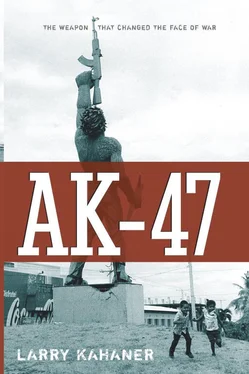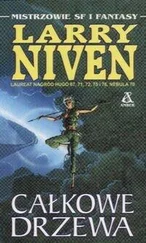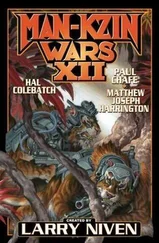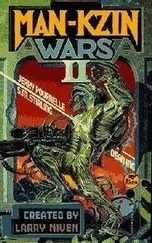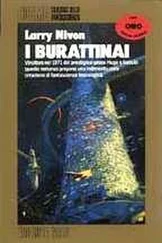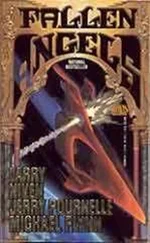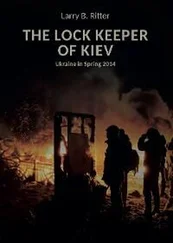Larry Kahaner - AK-47
Здесь есть возможность читать онлайн «Larry Kahaner - AK-47» весь текст электронной книги совершенно бесплатно (целиком полную версию без сокращений). В некоторых случаях можно слушать аудио, скачать через торрент в формате fb2 и присутствует краткое содержание. Город: Hoboken, Год выпуска: 2007, ISBN: 2007, Издательство: John Wiley & Sons, Inc., Жанр: История, military_history, на английском языке. Описание произведения, (предисловие) а так же отзывы посетителей доступны на портале библиотеки ЛибКат.
- Название:AK-47
- Автор:
- Издательство:John Wiley & Sons, Inc.
- Жанр:
- Год:2007
- Город:Hoboken
- ISBN:9780470315668
- Рейтинг книги:3 / 5. Голосов: 1
-
Избранное:Добавить в избранное
- Отзывы:
-
Ваша оценка:
- 60
- 1
- 2
- 3
- 4
- 5
AK-47: краткое содержание, описание и аннотация
Предлагаем к чтению аннотацию, описание, краткое содержание или предисловие (зависит от того, что написал сам автор книги «AK-47»). Если вы не нашли необходимую информацию о книге — напишите в комментариях, мы постараемся отыскать её.
AK-47 — читать онлайн бесплатно полную книгу (весь текст) целиком
Ниже представлен текст книги, разбитый по страницам. Система сохранения места последней прочитанной страницы, позволяет с удобством читать онлайн бесплатно книгу «AK-47», без необходимости каждый раз заново искать на чём Вы остановились. Поставьте закладку, и сможете в любой момент перейти на страницу, на которой закончили чтение.
Интервал:
Закладка:
So do California legislators and law enforcement officials who are scrutinizing the Brazilian ammunition-marking law for ideas. Instead of focusing solely on the firearm, they decided to look at ammunition for solutions to the state’s poor homicide closure rate. During 2003, 45 percent of California’s homicides remained unsolved. Although law enforcement officials in the state, as elsewhere, routinely collected bullets and empty cartridges left at crime scenes, nothing linked these remnants to a particular weapon until the shooter and the weapon were apprehended.
To help catch these people, the state senate passed a bill requiring all handgun ammunition sold or owned after 2007 in California to be marked, identifying the box from which it came. Ammunition dealers would be obligated to keep a record of sales, thus identifying each bullet shot and pegging it to the buyer. Gun owners were so incensed at the plan (cleverly labeled SB 357 after the .357 Magnum) that a Sacramento shooting club barred Department of Justice agents from firing on their range because of the attorney general’s support for the bill. The Sporting Arms and Ammunition Manufacturers’ Institute (SAAMI) opposed the bill, saying that implementation would cost hundreds of millions of dollars in new investment and raise the cost of each cartridge from pennies to dollars.
Law enforcement officials were split down the middle; some opponents suggested that the costs involved would not yield a worthwhile payoff, because criminals would simply use out-of-state ammunition. Law enforcement agencies were also concerned about the increased cost of ammunition that they would have to buy.
Another bill that attracted less controversy required that semiautomatic handguns imprint a microscopic stamp on casings as they were shot. In a criminal case, investigators would be able to match the gun (and presumably the owner) to the casings left behind at the scene. A company doing work in this area is NanoMark Technologies of Londonderry, New Hampshire, which holds a patent for “ballistic ID tagging.” Company officials contend that the ID tag is unambiguous—unlike bullet comparisons using conventional CSI-type ballistics methods—and leads directly to the weapon. The only shortcoming of the system is that the shooter could pick up the shell casings after firing, assuming the luxury of time and the presence of mind to collect them all.
To get around this problem, Seattle-based Ammunition Coding System developed a way of coding both the bullet and the cartridge casing. The company’s laser system imprints a unique identifying code on the inside of cartridge cases as well as the bullet. Both can be read with a magnifying glass. The company claims that the number can be read with as little as 20 percent of the bullet intact after firing. Testing by the San Bernadino County Sheriff ’s Department showed that they were able to read identification numbers in twenty-one of twenty-two instances. The only downside of this scheme is the high price of the engraving/handling equipment, from $300,000 to $500,000 per machine plus a per bullet licensing fee.
The implications of such bullet-tracing systems could be far-reaching. They could even keep small skirmishes from turning into regional wars. For example, UN officials had only casings to go on when they investigated a massacre at the Gatumba refugee camp in Burundi on the border of the Democratic Republic of the Congo. Beginning between 10 and 11:30 p.m. on August 13, 2004, refugees heard the sound of drums and religious chants approaching. Several survivors reported hearing a whistle and orders being shouted just before the attack. Witnesses disagreed on the number of assailants—the figure varied from one hundred to three hundred—but their composition was not in doubt. The attackers’ ranks included armed men, women, and children, some wearing complete or partial military uniforms and others in street clothes. They spoke several different languages, including those common to Congo and Burundi, and shouted slogans such as “kill these dogs, these Tutsis,” and “down with the Banyamulenge” (Tutsis from the Congo communities of South Kivu).
When the attackers finished their raid, 152 refugees were dead, and 108 were wounded. Eight refugees were never found. Of the dead and missing, 147 were Banyamulenge. The attackers did not target other groups in the camp. The tents housing Burundian returnees had been left untouched.
The massacre occurred during a fragile time. After six years of war in the Democratic Republic of the Congo and eleven years of war in Burundi, all sides were in the midst of winding down tensions both internally and externally when the attack occurred. Many people in the region considered the Banymulenge as pro-Rwandan even though they fought on both sides of the civil war in Congo. UN investigators suggested that the attackers’ goal was to reignite regional fighting and weaken transitional governments.
The plan began to work. The governments of Burundi and Rwanda threatened to attack Congo and ferret out those responsible for the massacre. Strong evidence indicated one group, the National Liberation Front (FNL), which may have been part of the attacking group, but they did not organize the action or carry it out alone, judging by the different languages spoken during the melee. Leaders of the Burundi-based FNL at first admitted participating in the attack but later recanted. The Hutu group justified the massacre, saying that the Tutsis were heading up a new war in Congo that would destabilize a region that had been working toward peace.
After Burundi’s first democratically elected president was assassinated in 1993, after only four months in office, war between the Hutus and Tutsi caused 200,000 deaths and displaced more than 1.3 million people both inside and outside the country. A massive wave of refugees entering Congo from Burundi and the concurrent genocide in Rwanda in the early 1990s sparked tribal wars and an overthrow of the Congolese government in 1997. When the newly installed regime was challenged by Rwandan and Ugandan rebels, the result was a regional war—pulling in additional countries—that left more than a million Congolese displaced. In addition, Rwandan rebels used Congo as a base to attack Rwanda, prompting Rwanda to invade.
The regional war surrounding the Democratic Republic of the Congo, formerly Zaire, has been dubbed “Africa’s first world war,” because it involved six nations, each with its own reasons for involvement, and at least twenty separate armed groups. Since the outbreak of large-scale fighting in 1997, at least 3.8 million people have died, mostly children, women, and the elderly, mainly due to starvation. (Some estimates put the figure as high as 4.5 million.) The prolonged war forced 2.25 million people from their homes, some into refugee camps like Gatumba. The war was the deadliest conflict since World War II, and it was fought mainly with small arms, AKs being the most popular weapon. Although hostilities officially ended in 2002, many of the armed groups continued to fight at the time of writing. To help maintain the delicate stability in the region, it was crucial for the United Nations to find physical evidence of the perpetrators and bring them to justice. This would go a long way to preventing further conflicts born from rumor and unsubstantiated facts.
Unfortunately, by the time investigators arrived at Gatumba camp, the area had been cleansed. Many bodies had been buried in mass graves without forensic examination. Evidence was contaminated and injured victims had been taken to hospitals, where workers rejected UN access to patients from the camp.
Investigators had little solid evidence to go on except some cartridge casings that had not been swept up. Of the thousands of rounds fired, four different cartridge types were found. Markings showed that one was manufactured in Bulgaria in 1995 by Arsenal Kazanlak, two from the People’s Republic of China in 1998 by an unknown armory, and one from Prvi Partizan in Uzice, Serbia.
Читать дальшеИнтервал:
Закладка:
Похожие книги на «AK-47»
Представляем Вашему вниманию похожие книги на «AK-47» списком для выбора. Мы отобрали схожую по названию и смыслу литературу в надежде предоставить читателям больше вариантов отыскать новые, интересные, ещё непрочитанные произведения.
Обсуждение, отзывы о книге «AK-47» и просто собственные мнения читателей. Оставьте ваши комментарии, напишите, что Вы думаете о произведении, его смысле или главных героях. Укажите что конкретно понравилось, а что нет, и почему Вы так считаете.
